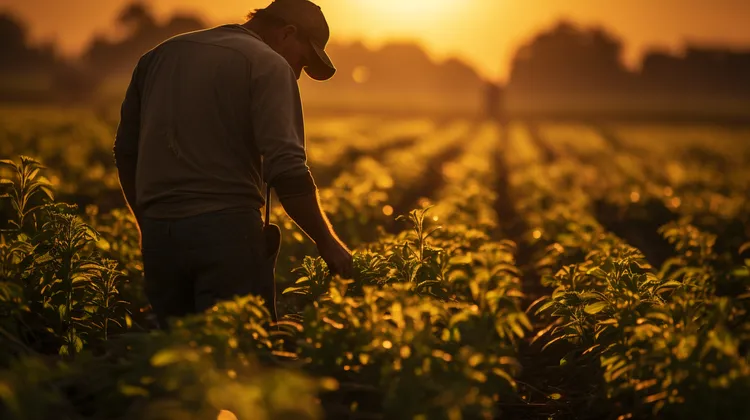
Boosting Agriculture with NFTs: From Farm to Market
The advent of blockchain technology has spawned a myriad of revolutionary applications, one of which is the Non-Fungible Token, or NFT. While most discussions around NFTs concentrate on digital art and collectibles, their utility in the agricultural sector holds tremendous potential. This article explores how NFTs can assist farmers from production to distribution, fostering a more efficient, transparent, and equitable ecosystem.
At the core of agricultural production is the need for adequate financing. Traditionally, farmers rely on loans or government subsidies, which can be wrought with delays and inefficiencies. NFTs could redefine crowdfunding, allowing farmers to tokenize their future produce and sell these tokens in advance. This not only gives them immediate access to capital but also creates a direct investment opportunity for consumers and investors looking for ethical options in the growing agri-tech market.
The unique identification and authentication properties of NFTs can serve to streamline certification processes for organic or sustainably farmed products. Each NFT linked to a batch of produce could contain immutable data about the farming practices used, inputs like fertilizers and pesticides, and even the carbon footprint. Such transparency would likely increase consumer trust and potentially allow farmers to command higher prices for their products.
In the realm of agricultural operations, managing land titles and access to resources can be problematic, particularly in developing regions. With NFTs, land ownership can be tokenized, which not only provides a tamper-proof record of ownership but can also facilitate smoother transactions and land sales, empowering smallholder farmers by giving them greater control and security over their most precious asset – their land.
Moving up the supply chain, NFTs can innovate contract farming by creating smart contracts that automatically execute when certain conditions are met. For instance, upon delivery of produce that meets quality standards encoded in the NFT, payment could be released instantly to the farmer, removing intermediaries and reducing the risk of disputes.
In the logistics arena, traceability is pivotal. NFTs can be used to create a digital twin of physical assets, in this case, agricultural produce, enabling real-time tracking through the supply chain. This reduces the chances of food fraud and waste, as stakeholders can pinpoint where losses or contamination occur and act swiftly to remedy the situation. In turn, this maintains product integrity and assures end consumers of the origin and journey of their purchased goods.
NFTs could also revolutionize subsidy disbursement and crop insurance. Governments can issue NFTs to represent subsidies or insurance claims, which can be redeemed by farmers as needed. The secure nature of blockchain would curb corruption and ensure that the aid reaches the intended recipients without unnecessary leakage.
When it comes to marketing and sales, NFTs unlock new dimensions. Farmers can tokenize their produce and sell directly to consumers or retailers without the need for physical markets. This reduces dependency on middlemen, which can increase the profit margin for farmers and lower the cost for buyers. These NFTs can also incorporate smart contract features such as dynamic pricing based on demand, ensuring farmers get the best possible price for their yield.
The integration of social elements into NFTs can enhance brand loyalty and community engagement. Farmers could reward buyers with NFTs that perhaps offer future discounts or provide access to exclusive farm-related experiences. Through this gamification, agricultural stakeholders can foster a strong community of supporters who are invested in the farm’s success.
International trade could also benefit from the adoption of NFTs. Cross-border payments remain a challenge due to various currencies and convoluted banking regulations, but NFTs can facilitate smoother transactions by acting as a bridge currency. This simplification can open up new markets for farmers and help diversify their income streams.
NFTs can contribute to sustainability efforts. Tokenizing natural assets, such as trees planted or water saved, could create a marketplace for environmental credits. Farmers could sell these credits to companies or individuals looking to offset their carbon footprint, thus incentivizing sustainable farming practices.
NFTs hold significant promise for the agricultural sector – from offering secure and transparent financing options to assuring supply chain integrity and opening new marketing avenues. To harness these benefits, it is imperative for the agro-industry, tech developers, and policymakers to collaborate in developing the infrastructure and regulatory frameworks needed to implement NFT technology effectively. Embracing this innovation could very well be the key to a more resilient and prosperous future for farmers worldwide.
8 thoughts on “Boosting Agriculture with NFTs: From Farm to Market”
Leave a Reply
You must be logged in to post a comment.
Absolutely skeptical about this NFT craze. How many farmers truly understand or can access this tech? Seems like a disconnect between real farming and tech fantasies.
Using NFTs in agri-tech for better financing, increased transparency, and market expansion is a visionary approach. So much potential! 🌱🔥
NFTs offering a tamper-proof record of land ownership is a massive milestone for agricultural security. Loving this innovation!
Great, now farmers have to worry about cyber security and hackers on top of everything else? That’s a load of stress they don’t need.
The idea of using NFTs to enhance brand loyalty with rewards and experiences is super cool. Kudos to the creative minds behind this!
NFTs for streamlining certification of organic farming is a brilliant use case. Transparency is key in our food choices.
Embracing NFT tech in the agro-industry is a bold move with so many potential wins. It’s exciting to see innovation taking root! 💚🌾
I always thought NFTs were just for art. The idea of using them for crop insurance and subsidies could change the game for agriculture.